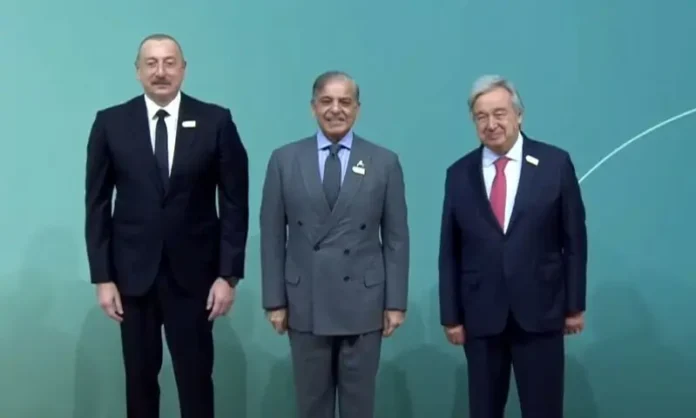During COP29, the Prime Minister of Pakistan, Shehbaz Sharif illustrated the catastrophic damages and examined the call to mobilize climate funding at the Conference of the Party Twenty-Nine, which comes into the picture by indicating that developing countries will need an additional $6.8 trillion by 2030 to carry out even less than 50% of their present contributions towards the Paris Agreement or NDCs as they are popularly known. Copresidents between two avenues addressed the financing requirements for the most exposed portion of the population as nearly 200 nations congregated to discuss the New Collective Quantified Goal NCQG.
Negotiation No Progress
In such a case, the NCQG aims to mobilize adequate resources to assist the hardest hit by climate change. But the talks have broken down over the question of which countries shall contribute to the resources. The US, Europe, and the like have been ready to fund, but only on condition that other offenders, like China, South Korea, and Singapore, also contribute, which resulted in a stalemate.
Result of War on the Third World Countries
Sharif conceded that the financial requirements of the developing world have soared after a year of climate-induced disasters. As the fifth most climate change-vulnerable country, Pakistan encountered devastating floods in 2022, which accounted for more than 1,700 casualties and displaced over 33 million people. The flood caused economic damage beyond 30 billion US dollars, and more than 9 billion donations were committed for recovery by the global community. Still, those funds that were promised were not released.
Appeal to Donor Countries to Honor their Promises
Sharif requested that the countries pledge to provide 0.7% of their gross national income GNI every year as development aid and ensure that all the existing climate funds are available. He also explained how the $100 billion per year announced climate finance commitment made as part of COP15 over ten years ago is still unmet. According to the Organization for Economic Co-operation and Development OECD, this fund has attained only $160 billion, most of which has been lent out hence exacerbating the chances of a debt crisis in these countries.
Need for Equitable Climate Finance Mechanisms
With reference to the climate finance system, Shiraf asserted that there was a need to develop more just mechanisms and non-b debt financing alternatives, which would allow the countries to pay for the implementation of the adaptation and mitigation measures. He called on the UNFCCC to set up a body that would conduct reviews of the NDCs of all countries from time to time and called to multiply the current adaptation financing by two and increase the so-called loss and damage funding.
Also Read: Shehbaz Sharif Calls for Urgent Action to Protect Glaciers
Multilateral Banks’ Commitment
At COP29, nations renewed their faith in the new ‘loss and damage’ pots of money, which last year saw the commitment of $800 million to benefit the countries affected most by climate change. Moreover, the World Bank, the European Investment Bank, and the Asian Development Bank committed to raising climate financing for low and middle-income nations to US$ 120 billion per year by 2030. This particular commitment is a 60% rise from the amount spent last year by this group of ten multilateral development banks (MDBs), in which a substantial portion was used to assist many nations in dealing with global warming effects.
Conclusion
The speech delivered by Prime Minister Shehbaz Sharif during COP29 emphasizes the great financial burden that the developing world carries to adhere to national climate action plans. Finally, by appealing for better and more just climate finance systems while asking that donor countries honor their pledges, Sharif demonstrates the need for collective action to combat climate change and build a better world.
